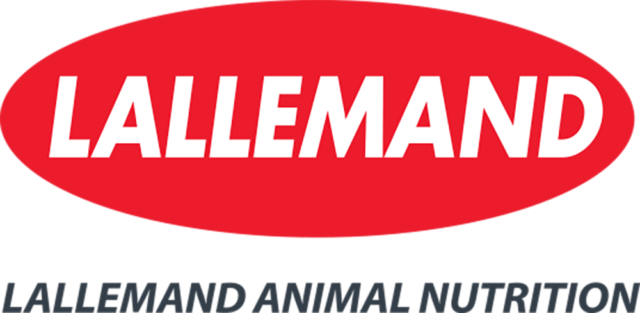To read this article in French, click here.
Producers across the U.S. experienced a wet and rainy chopping season for small-grain silage and haylage. These weather conditions set the stage for compromised fermentation in bunks, piles and bags – and could lead to high butyric acid content in forages with its tell-tale obnoxious smells.
What’s wrong with butyric fermentation?
Silage crops that have undergone a butyric fermentation due to the activity of clostridial bacteria species have already lost nutrients, may contain toxic compounds and are very unpalatable. When mixed in rations, these types of silages quickly depress dry matter intake (DMI) in ruminant animals with the concomitant loss in performance such as milk production, live-weight gain or feed efficiency. High-producing dairy cows are particularly vulnerable to the negative effects of clostridial silage.
The excess butyric acid ingested is quickly absorbed and converted to beta-hydroxybutyric acid (BHBA) in the liver. This in turn increases blood BHBA content, leading to a higher risk of ketosis and other metabolic disorders, such as a displaced abomasum.
Is the silage still usable?
It is strongly recommended never to feed such silages to transition dairy cows. However, sometimes it is necessary to feed less-than-perfect silage. For all practical purposes, a butyric acid content of less than 0.5% dry matter basis (DM) (or less than 2.2 grams per pound DM basis) would be acceptable. This silage quality could have been improved upon with good ensiling techniques or management.
Dairy producers and consultants may become aware of a change in color, consistency, smell and even palatability or productivity when such high butyric acid ensiled forages are mixed in a total mixed ration (TMR) and fed to dairy cows.
How to manage the butyric acid challenge
In cases with confirmed or suspected butyric acid fermentation, sample analysis is essential. Take small-grain silage/haylage samples on a regular basis with a full fermentation profile to track what happened in the fermentation process.
This will help identify parameters to be aware of:
- Low DM crops, typically anything less than 35% DM, but especially less than 30% DM.
- High crude protein (CP) and/or high potassium (K) contents on a DM basis, as these components would buffer against a rapid pH drop.
- High ash values indicating contamination with soil or dust during the ensiling process. This will have contaminated the forage with bad actor microbes (enterobacteria, clostridia, etc.) and can also buffer against pH drop. Target ash contents for no soil contamination in small grains, and grass haylages would be 6% to 7% DM basis and alfalfa haylages would be about 8% DM basis.
- An ammonia value, when expressed as a percent of total CP, at 12% or more would be an indication of excess microbial proteolysis. This likely indicates unwanted clostridia microbial activity.
- Any butyric acid content above 0.5% DM basis merits attention, and values greater than 1% DM could be problematic, depending on the small-grain silage/haylage inclusion rate in the rations. Be aware that this short-chain fatty acid is very volatile, so good sampling technique and rapid transit to the laboratory are required to get a baseline value. Butyric acid contents can increase over time in storage.
How to feed compromised silage
Depending on how much of the haylage has a butyric type of fermentation, it can have elevated contents of ammonia (NH3-N) and soluble CP, much higher DM losses and significantly lower energy content as the clostridia bacteria will have fermented out much of the available digestible nutrients.
Dairy cows can process excess butyric acid in the liver to BHBA, which can add to other predisposing factors for ketosis. This is one of the reasons this type of silage should not be fed to transition dairy cows.
For the rest of the lactating herd, “dilution is part of the solution.” The rule of thumb is to ensure milk cows are not ingesting more than 50 grams of butyric acid per cow each day. If the small-grain silage or haylage contains 1.5% butyric acid on a DM basis (which is 6.8 grams per pound DM), then the haylage inclusion rate should be limited to 7.4 pounds DM per cow in milk daily to keep to the 50-gram-per-day ceiling. Note that butyric acid is a cost-effective and timely analytical tool we can use regularly to gauge how the fermentation went and how much compromised haylage to feed.
Butyric-acid-compromised forages will also contain a wide range of bio-active compounds called biogenic amines. These can be even more detrimental to cattle performance, lowering DMI via reductions in rumen DM digestibility. The biogenic amines are also more expensive and time-consuming to analyze for routinely, so they are often an unknown quantity. For that reason, some nutritionists will ask farm teams to aerate compromised small grain or haylages in a thin layer overnight to try and lower the amount of both butyric acid and biogenic amine content. This is a good practice, as these forages are aerobically stable. However, the final content of butyric acid after aeration will not actually be known.
Overall, there is variation in the content of butyric acid and biogenic amines over time – plus the expected wide range of individual cow responses – at any given compromised forage inclusion rate in their ration. It’s likely the farm team will feed more grains in the TMR to remedy the lower energy content in such forages.
There is a good case for giving your herd an edge in helping use such forages to maintain a stable rumen pH and microflora, plus address the potential reduction in organic matter digestibility. A rumen-specific active dry yeast probiotic (Saccharomyces cerevisiae CNCM I-1077) fed at 10 billion cells per milk cow daily has been shown to support proper rumen function and successfully address challenging feed circumstances. It can also help smooth out cow responses to forage transitions.
Final thoughts
Dealing with rain during chopping season is not an insurmountable challenge. Anticipating butyric acid fermentation can help producers address silage quality issues – and performance setbacks – before their bottom line is affected.
Key tips to remember:
- Use regular forage analyses to identify the amount and extent of a butyric acid problem over time.
- Any such compromised forage is not for transition cows – focus on pre-fresh and fresh cow pens.
- Calculate and agree to a compromised forage inclusion rate (DM basis) suitable for the main milking herd that is below a ceiling of 50 grams of butyric acid per lactating cow daily.
- Consider spreading the compromised haylage out to reduce both butyric acid, and potentially the biogenic amine contents, as available clean floor space and weather will permit.
- Use a rumen-specific active dry yeast probiotic proven to help manage forage transitions, maintain rumen pH and improve ration digestibility.
View this management challenge as a teachable moment for the forage team and plan to avoid such problematic small-grain silage and haylages in the future.
References omitted but are available upon request by sending an email to the editor.










